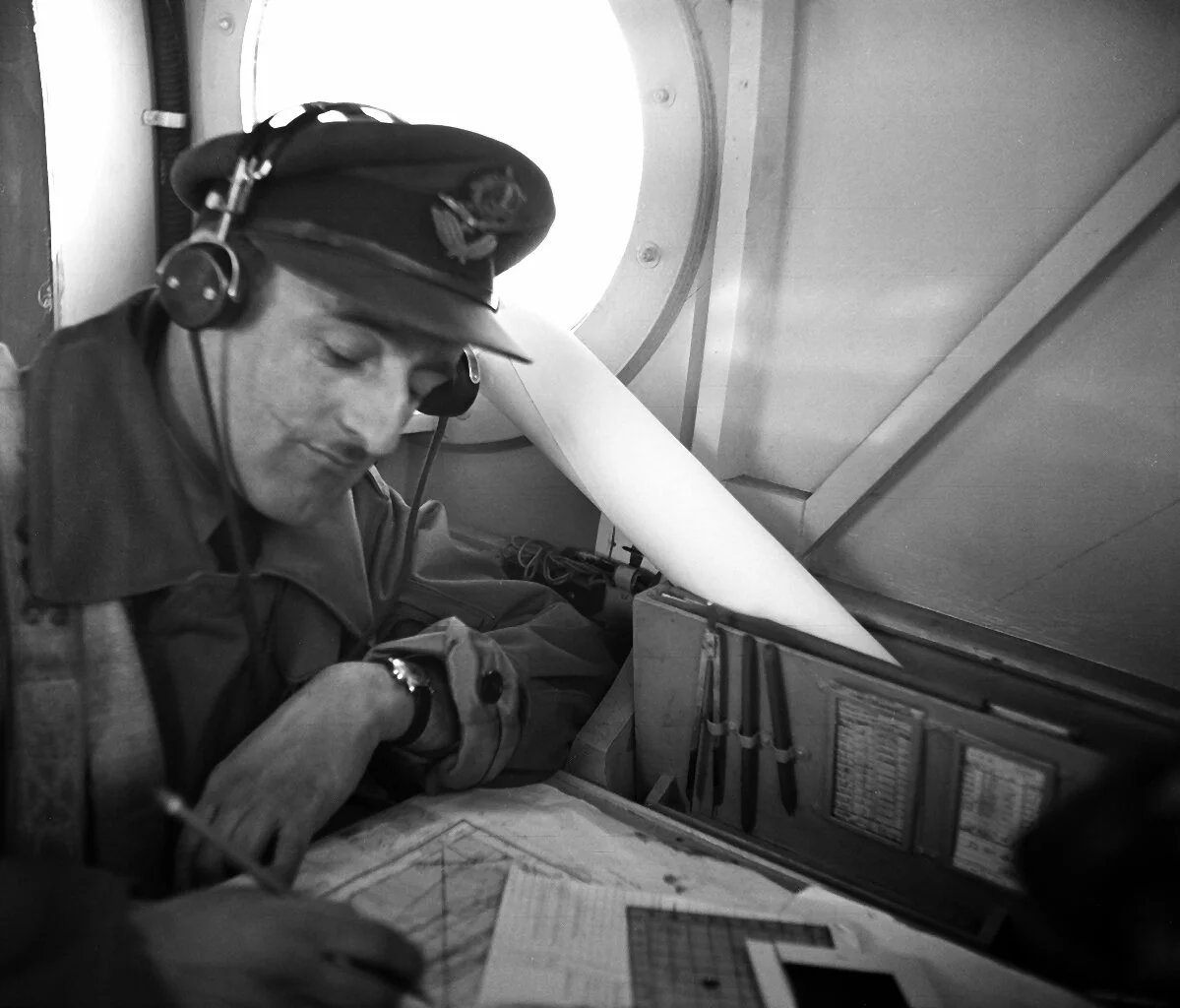RCAF WAR YEARS
In 1940, the year of the California road trip, World War II had already begun. 23 year-old Stan was still in Calgary, living at home and working as a clerk at Harry’s News and Tobacco Shop. I have found no records to show his whereabouts again until June 5,1942, when he turns up in my mother’s diary. He was, by then, housed at Rockcliffe Airbase in Ottawa, in training with the RCAF School of Photography.
I don’t know whether Stan volunteered for service, or was drafted. From 1940 to 1944, 60,000 Canadians volunteered to serve overseas, but there was public pressure to draft even more recruits, so conscription started in 1942. I guess we’ll never know to which group Stan belonged. He did tell me, though, that he had signed up for the Photographic Division because it seemed the assignment least likely to get him killed. Judging from the photos in his collection, Stan took basic training, and learned navigation, photography/darkroom technique, aerial survey photography and cinematography.
A few photos from Stan’s RCAF training days. View as a slideshow for a better look.
During his stay in Ottawa,The Y’s Red Triangle organization put on social events for the recruits at both Landsdowne and Rockcliffe bases. These were a highlight of the Capital’s wartime social scene, and the locals enjoyed attending them as much as did the men and women in uniform. It was at one of these events that Stan met “Heckie” Bertrand. He renamed her “Jo” — for life, as it turned out — and they were married in April,1944. Falling in love with and marrying an Ottawa girl, as luck would have it, placed him perfectly to become part of a very exciting time in the Canadian film industry in the years ahead.
There are a lot of missing details about Dad’s early days in Ottawa, but I have always known that he was lucky enough to never see service overseas. I believed the story to be that, with his training complete late in 1944, he was then scheduled to go, spared only by the war’s end. But while digging around on the web one day, I made a surprising discovery; an article from Arctic Journal 1950*, that tells what really happened:
Before the war, a large part of the RCAF’s work had been to carry out aerial survey operations aimed at completing the map of Canada. In 1939 though, photo survey squadrons were redeployed to bomber reconnaissance work in Europe, and aerial survey work over Canada was stopped for five long years. But in 1944, with the war still going on, the Canadian government suddenly required the RCAF to carry out “urgent” photo survey operations up North, and Rockcliffe’s No.13 Survey Squadron was assigned to this task. One photo below shows Stan with his mates posing in front of an aircraft bearing the Photo Survey Squadron 13 logo.
So it turns out my father finished his training, and headed north to to do his job in the war effort.
*A 16-page article by Wing Commander R. I. Thomas, RCAF, from Arctic journal, 1950 (pdf, 4 MB). http://explorenorth.com/library/aviation/RCAF_Photo_Survey-Arctic3-3-150.pdf
At that time, three years after Japan’s attack on Pearl Harbour, the US and Canada were collaborating on infrastructure to protect the northwest corner of the continent from possible further attacks, allowing troops to move safely overland between Alaska and the contiguous United States. Accurate maps were urgently needed for the building of the Alcan Highway (the original name of the Canadian section of the Alaska Highway). Airfields, bridges, buildings, telephone lines were needed along the highway, and Squadron 13’s role was to collect the aerial photo survey information needed to get the defensive infrastructure built. Pilots were assigned to each of the survey crews, flying them in specially equipped Mitchell aircraft over landscape covered earlier by land surveyors. Bush pilots moved the crews about in small Norseman float planes from one map reference point to another, as they slowly put the pieces of the map in place.
RCAF Aerial Survey Crew Northwest Canada, 1944
The photos below show Stan’s survey crew and RCAF Norseman aircraft 2496. By all accounts, the work was exacting and life in the bush was difficult and dangerous.
















